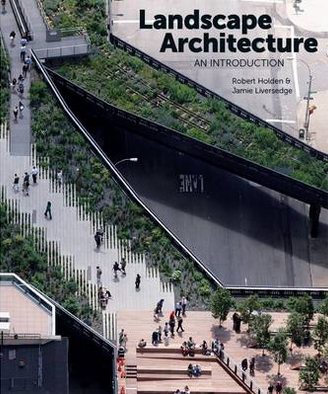
Landscape Architecture: An Introduction
[Book Description]
Aimed at prospective and new students, this book gives a comprehensive introduction to the nature and practice of landscape architecture, the professional skills required and the latest developments. After discussing the history of the profession, the book explains the design process through principles such as hierarchy, human scale, unity, harmony, asymmetry, colour, form and texture. It looks at how design is represented through both drawing and modelling, and through digital techniques such as CAD and the use of GIS (Geographic Information Systems). This is followed by an examination of project management and landscape management techniques. Finally, the book explores educational and employment opportunities and the future of the profession in the context of climate change and sustainability. Illustrated with international examples of completed projects, Landscape Architecture provides an invaluable, one-stop resource for anyone considering study or a career in this field.
[Table of Contents]
Introduction
What is a landscape architect? 13 (4)
How this book is structured 17 (3)
1 The History of Landscape Architecture
Beginnings 20 (4)
The growth of landscape architecture as a 24 (4)
profession
The growth of the profession in Europe 28 (1)
The expansion of the profession worldwide 29 (1)
Case study: Painshill Park, Surrey, UK 30 (2)
Planning 32 (4)
City planning and structural green space 36 (2)
Changing styles: from Modernism to 38 (6)
Postmodernism and beyond
Case study: Emscher Park, Ruhr Valley, 44 (2)
Germany
Changing priorities: ecology, 46 (8)
biodiversity and sustainability
Case study: Ijsselmeerpolders, the 54 (4)
Netherlands
2 Beginning a Project
The brief 58 (7)
Types of client 65 (1)
Case study: Westergasfabriek Park, 66 (2)
Amsterdam
Fees: how to get paid 68 (2)
Case study: Central Park, New York City 70 (2)
Site survey 72 (2)
Case study: Thames Barrier Park, London 74 (4)
3 The Design Process
Developing a design 78 (8)
Case study: Aphrodite Hills, Cyprus 86 (2)
The principles of design 88 (16)
Case study: Hedeland Arena, Roskilde, 104(2)
Denmark
Human flow and natural change 106(2)
Case study: Marketplace and Waterfront, 108(4)
Odda, Norway
4 Representing the Landscape Design
Drawing and sketchbooks 112(4)
Case study: School Courtyard, London 116(3)
3D modelling and video 119(3)
Photography 122(1)
Digital design 123(1)
Building Information Modelling (BIM) 124(1)
Mapping, air photography, satellite 125(3)
imagery and Geographic Information
Systems (GIS)
Report writing 128(1)
Live presentations 129(1)
Case study: Villa Garden at Aphrodite 130(4)
Hills, Cyprus
5 From Design Team to Long-term Landscape
Management
The stages of work 134(2)
Case study: London 2012 Olympic Park 136(2)
Multi-disciplinary design teams 138(2)
The programme of work and the design team 140(1)
Costing a project 141(6)
Landscape management 147(1)
Case study: The Parks Trust, Milton 148(4)
Keynes, UK
Case study: Dr Jac. P. Thijssepark, 152(4)
Amstelveen, the Netherlands
6 Education and Employment
Applying for a university course 156(7)
Internships and jobs 163(1)
Setting up your own business 164(1)
Marketing 165(1)
Case study: Thames Landscape Strategy 166(2)
A note on professional status: the way 168(2)
the profession is seen worldwide
Case study: Druk White Lotus School, 170(4)
Ladakh, India
7 The Future
A changing environment 174(3)
Some challenges 177(1)
Case study: The Dutch National Water Plan 178(4)
Case study: Floating Gardens, Shad 182(4)
Thames, London
Case study: Korail, Dhaka, Bangladesh 186(4)
Case study: North Holland coastline, the 190(2)
Netherlands
Recycling and everyday practice 192(2)
Final thoughts 194(2)
Glossary 196(3)
Bibliography 199(5)
Index 204(4)
Picture credits 208

 新书报道
新书报道